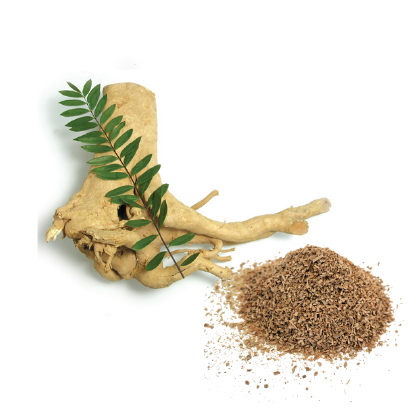What Does Low Testosterone Do to a Man? Symptoms, Risks, and Natural Solutions
- Muhd. Hanis
- Sep 13
- 4 min read
Updated: Sep 14
Testosterone is often referred to as the “male hormone,” but its role in men’s health is far more complex than most people realize. From muscle growth to mood stability, testosterone impacts nearly every aspect of male vitality. When levels drop too low, men may experience changes that affect their physical health, emotional well-being, and even long-term quality of life.
So, what does low testosterone do to a man? In this article, we’ll explore the symptoms, risks, and science-backed natural solutions to support healthy testosterone levels.

Understanding Testosterone and Its Role in Men
Testosterone is a hormone produced primarily in the testes, with smaller amounts made in the adrenal glands. It helps regulate:
Muscle mass and strength
Sex drive and performance
Energy levels
Mood and mental focus
Bone density
Red blood cell production
While testosterone naturally peaks during late teens and early adulthood, levels gradually decline after the age of 30. A mild drop is normal, but some men experience a more significant decline, leading to what’s commonly called low testosterone (low T).
What Does Low Testosterone Do to a Man?
When testosterone levels fall below healthy ranges, men may face a wide range of symptoms. Here are the most common effects:
1. Fatigue and Low Energy
Men with low T often feel drained, even after a full night’s sleep. Energy for work, workouts, or intimacy may be noticeably reduced.
2. Reduced Muscle Mass and Strength
Testosterone plays a key role in building and maintaining lean muscle. Low levels can cause muscle shrinkage and make it harder to gain strength, even with regular exercise.
3. Increased Body Fat
Low testosterone can shift the body’s metabolism, leading to higher fat storage—especially around the belly. Some men also notice a decrease in their ability to burn calories effectively.
4. Low Sex Drive and Erectile Issues
Perhaps the most recognized effect of low testosterone is a decline in libido. Men may also face erectile dysfunction, reduced sensitivity, or weaker performance in the bedroom.
5. Mood Swings and Irritability
Hormones heavily influence mood. Low testosterone may lead to anxiety, irritability, or even depression. Some men describe feeling less motivated or less like themselves.
6. Poor Sleep Quality
Low T has been linked to sleep disturbances, including insomnia and disrupted sleep cycles, which can worsen fatigue.
7. Memory and Cognitive Decline
Testosterone is tied to brain health. Low levels can affect concentration, memory, and overall mental sharpness.
8. Weaker Bones
Long-term testosterone deficiency increases the risk of osteoporosis, making bones fragile and prone to fractures.
9. Reduced Fertility
Since testosterone influences sperm production, low levels may decrease sperm count and impact fertility.
10. Decreased Confidence and Vitality
Men often describe a loss of their “edge” or sense of vitality, which can affect relationships, work, and personal goals.
Long-Term Risks of Low Testosterone
If left untreated, low testosterone doesn’t just affect daily life—it can contribute to more serious health conditions:
Metabolic syndrome (a mix of high blood pressure, high blood sugar, and obesity)
Type 2 diabetes
Cardiovascular risks
Osteoporosis-related fractures
Worsening depression or anxiety
This is why it’s important for men to recognize the signs and seek solutions early.
Natural Ways to Support Testosterone Levels
While testosterone replacement therapy (TRT) is an option, many men prefer exploring natural methods first. Here are evidence-based strategies:
1. Maintain a Healthy Weight
Excess body fat, especially belly fat, can suppress testosterone production. Losing weight through diet and exercise can naturally boost levels.
2. Prioritize Strength Training
Resistance exercises like weightlifting stimulate testosterone release. Short, intense workouts tend to be more effective than long cardio sessions.
3. Improve Sleep Quality
Aim for 7–9 hours of quality sleep. Sleep deprivation is one of the fastest ways to lower testosterone levels.
4. Manage Stress
Chronic stress raises cortisol, which directly competes with testosterone. Practices like meditation, deep breathing, and regular physical activity can help.
5. Nutrition Matters
Certain nutrients are crucial for testosterone production:
Zinc (found in oysters, beef, pumpkin seeds)
Magnesium (spinach, almonds, dark chocolate)
Vitamin D (sun exposure or supplements)
Healthy fats (avocados, olive oil, nuts)
6. Herbal Support
Some traditional herbs have been studied for their testosterone-supporting effects:
Tongkat Ali (Eurycoma longifolia) – known to support male vitality and hormonal balance.
Maca Root – may help with energy, mood, and libido.
Ashwagandha – shown to lower stress and improve testosterone in some studies.
Guarana – an energizing herb that supports stamina and mental clarity.
These herbs can be taken as capsules, powders, or even blended into herbal coffee mixes designed for men’s health.
7. Limit Alcohol and Avoid Smoking
Both habits can negatively affect hormone balance, liver function, and overall vitality.
When to See a Doctor
If you recognize several of the symptoms above and suspect low testosterone, it’s wise to consult a healthcare provider. A simple blood test can confirm levels, and your doctor may recommend medical treatments alongside lifestyle changes.
Final Thoughts
So, what does low testosterone do to a man? The short answer is: it impacts nearly every aspect of health, from energy and muscle mass to mood, confidence, and long-term wellness.
The good news is that men can take proactive steps to support testosterone naturally—through lifestyle changes, nutrition, and herbs like tongkat ali, maca, and guarana. By staying informed and taking action early, men can protect their vitality and enjoy a healthier, more confident life.



Comments